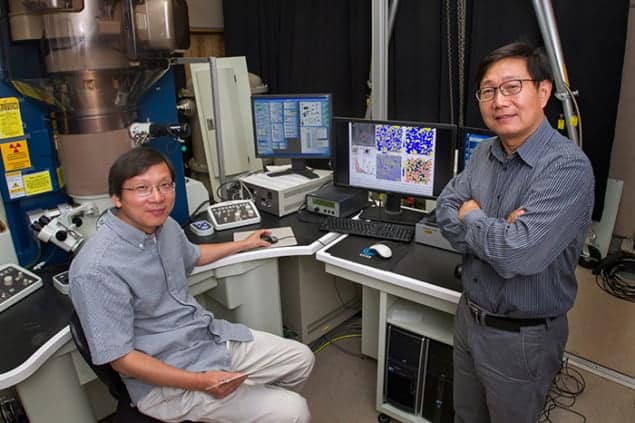Flash Physics is our daily pick of the latest need-to-know developments from the global physics community selected by Physics World‘s team of editors and reporters

Enhancing iron-based superconductors
A new method that doubles the amount of electrical current an iron-based material can carry without losing its superconducting properties – while also increasing the material’s critical temperature – has been developed by an international team of researchers based in the US and Japan. Iron-based superconductors can conduct electricity without resistance at relatively high temperatures (when compared with conventional superconductors, which must be chilled to near absolute zero to become superconducting). The researchers bombarded the material with protons at low energy, thereby simultaneously increasing its current-carrying capacity and critical temperature – a first for an iron-based superconductor, according to team-leader Qiang Li, at the US Department of Energy’s (DOE) Brookhaven National Laboratory. The researchers also used electron microscopes to view microstructural defects – which cause the lattice to locally compress or expand – that appeared in an iron-based superconducting material after the material was bombarded with low-energy protons. Their new technique could be used to improve the performance of superconducting wires and tapes. The research is published in Nature Communications.
Gender disparity found among ESO telescope-time proposals
Proposals submitted by female principal investigators for telescope time at European Southern Observatory (ESO) facilities are much less likely to be accepted than their male colleagues. A study carried out by Ferdinando Patat, an astronomer at ESO, looked at 13,000 proposals from about 3000 principal investigators over an eight-year span, finding that success rates were 16% for women and 22% for men. The study follows a recent finding that female postdoctoral-fellowship applicants at a US geoscience institution were half as likely as their male counterparts to receive glowing recommendation letters.
How to make ferroelectric water

Water becomes ferroelectric when trapped in a solid, according to Martin Dressel and colleagues at the University of Stuttgart, the Moscow Institute of Physics and Technology and several other institutes in Russia and the Czech Republic. Water molecules have large electric-dipole moments and there are strong interactions between molecules. These properties could result in ferroelectric order in water, whereby the dipole moments of water molecules point in the same direction to create a spontaneous electric polarization. Normally, this does not happen because hydrogen bonding between water molecules screens dipole–dipole coupling and suppresses ferroelectric order. Now, Dressel and colleagues have created a ferroelectric material by trapping water molecules within tiny channels in the mineral beryl. The molecules are separated by 46 μm, which is far enough apart to suppress hydrogen bonding – but near enough for the dipole–dipole interaction to cause ferroelectric order at temperatures below about 10 K. Writing in Nature Communications, the team says the ferroelectricity of water molecules may play a key role in the functioning of biological systems and find applications in fuel and memory cells, light emitters and other nanoscale electronic devices”.
- You can find all our daily Flash Physics posts in the website’s news section, as well as on Twitter and Facebook using #FlashPhysics. Tune in to physicsworld.com later today to read today’s extensive news story on galaxy rotation and the link to dark matter.



